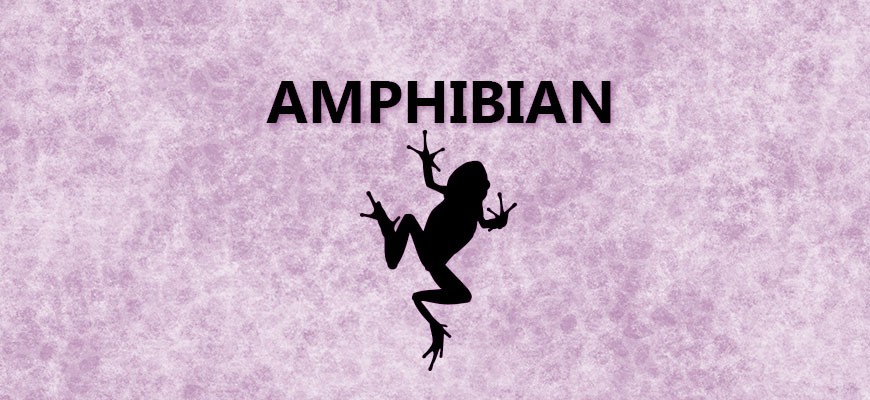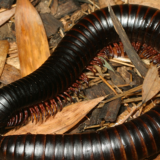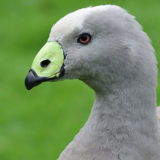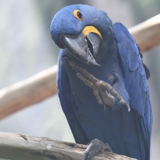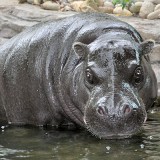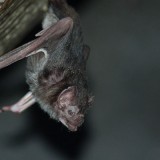RANGE
Northern Argentina, Uruguay, and Grande do Sul, eastern Brazil.
HABITAT
Tropical Rain forest regions which contain plenty of damp vegetation.
SIZE
Generally as wide as they are long, these large mouthed frogs can range from 3½ to 5 inches
(9 – 13 cm) long.
LIFE EXPECTANCY
Unknown
REPRODUCTION
The Argentine Horned frog spends most of its time buried in the mud or dense leaf litter. It is generally only during reproduction that they will venture into jungle pools for mating and laying eggs. At this time they will spend most of their time concealed under leaves or moss, with only the tops of their heads and eyes protruding. Mating pairs are very alert to surrounding movement and sounds, probably due to being more vulnerable while in the water.
BEHAVIOR
The Argentine horned frog is a large, heavy bodied frog with short, yet fairly strong legs. These frogs are easily recognized by their extremely large heads and wide mouth. Also known as the “Ornate horned frog”, its bright coloration made up of greens, reds, yellows and blacks, provide excellent camouflage by breaking up the frogs outline. This coloration allows the frogs to hide while lying in wait among the greenery, with only their eyes protruding. These large frogs are known for their aggressive nature, and their large mouths allow them to capture and swallow prey almost as large as themselves. When a prey item such as an amphibian or small mammal passes too close, the frog will lunge forward from its hiding place and grab the animal, using its powerful jaws and teeth to kill and swallow the prey. When threatened, horned frogs will not hesitate to attack an intruder many times their own size. The Argentine horned frog and related species are also known to cannibalize their own kind.
POINTS OF INTEREST
The “horned frogs” get their name from the raised and pointed eyelids that are drawn up and resemble small horns. These frogs are known for their aggressiveness and many myths have developed around this fact. One such myth can be heard in parts of Argentina where these frogs are known as “horse-killers”. Aggressive frogs have been known to grab the lips of grazing horses, however they do not carry any venom and its unlikely that a horse could die from the bite of one of these frogs.
DIET
Wild: mice, lizards, other frogs and amphibians, insects
Zoo: crickets, mice
STATUS
Many amphibian species numbers are in decline for numerous reasons. The Argentine horned frog is faced with habitat destruction, due to the loss of rain forests within its’ natural range and numbers are declining due to collection for the pet trade.
REFERENCES
1. Simon & Schuster’s Guide to Reptiles and Amphibians of the World, by Massimo Capula, Edited by John L. Behler. 1989.
2. Encyclopedia of Reptiles, Amphibians & Other Cold-blooded Animals. by Maurice Burton
3. The Completely Illustrated Atlas of Reptiles and Amphibians for the Terrarium. 1988
Grzimek’s Animal Life Encyclopedia, Dr. Dr. h.c. Grzimek, Editor-In-Chief

